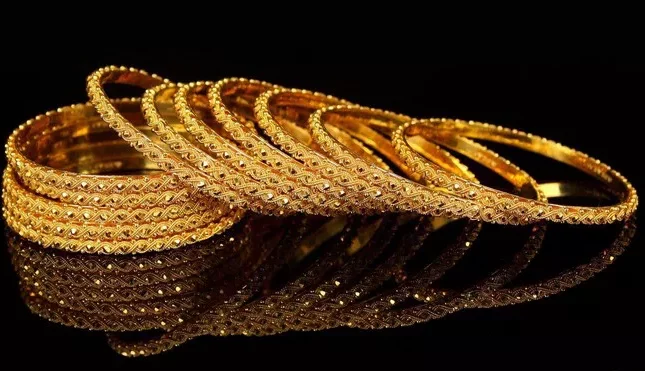Adiba Ahmed’s childhood curiosity about her mother’s fondness for gold jewelry transformed into a profound realization during a period of financial strain. When financial troubles loomed over her family and her mother sold their gold possessions to navigate through the tough times, Ahmed grasped the intrinsic value of gold jewelry as a reliable fallback.
The tradition of gifting gold jewelry on special occasions is deeply rooted in many South Asian cultures, including Bangladesh, from where Ahmed’s family migrated to Canada. This tradition resonates in countries like Pakistan and India as well.
A report by the World Gold Council in 2023 revealed that Indian households collectively possess about 25,000 tonnes of gold, representing approximately 12 percent of the world’s mined gold.
In India, gold jewelry holds significant cultural and financial significance, often exchanged during weddings, births, and festivals. Around half of India’s demand for gold jewelry stems from wedding ceremonies, according to the World Gold Council.
Satwinder Kaur Bains, the director of the South Asian Studies Institute at the University of the Fraser Valley, underscores the significance of gold ornaments as a symbol of financial independence, especially for brides embarking on a new phase of life.
Recent market dynamics, including potential interest rate adjustments and geopolitical tensions, have propelled gold prices to unprecedented levels. On May 20, bullion reached a record high of US$2,449.89 per ounce, indicating favorable conditions for investors and sellers alike.
Aaron McDermand, proprietor of Aaron Buys Gold, notes a notable surge in individuals selling their gold jewelry, juxtaposed with a decline in purchases. He reports acquiring a substantial amount of South Asian and Middle Eastern gold from customers.
Ahmed’s personal experience, where her family relied on selling gold jewelry to cover essential expenses during a challenging period, highlighted the tangible value of these possessions beyond mere aesthetics.
This revelation steered Ahmed towards advocating for financial literacy and asset accumulation. As the founder of Phoenix Consulting in Hamilton, she actively engages in financial education through speaking engagements and workshops.
For many members of the South Asian diaspora, investing in gold jewelry holds precedence over traditional financial instruments like stocks due to cultural familiarity.
Parween Mander, a Vancouver-based financial coach, observes that a lack of financial literacy among first-generation Canadians often leads to feelings of guilt and uncertainty regarding financial decisions.
Professor Bains emphasizes that women often preserve the gold they receive, intending to pass it down to future generations, thereby creating a legacy of wealth and sentimentality.
Although younger South Asian Canadians are increasingly exploring alternative avenues for wealth accumulation, such as gold bars, stocks, and real estate, the tradition of passing down gold ornaments remains prevalent among older generations.
For individuals like Mander, whose investment preferences diverge from the traditional approach, gold jewelry serves more as a sentimental keepsake than a strategic investment.
While the emotional attachment to generational gold jewelry can inhibit its sale, practical considerations such as liquidity and purity influence investment decisions, especially in the Canadian context.
In Canada, 14- and 18-carat gold jewelry is more commonplace compared to South Asian countries where higher purity gold is prevalent, reflecting differences in market preferences and accessibility.

